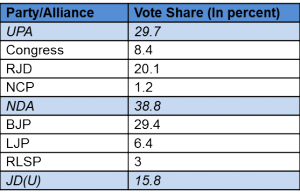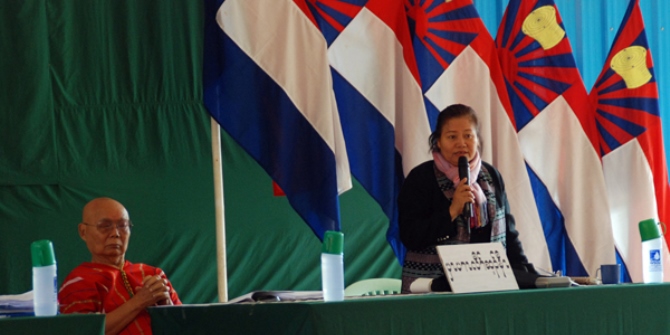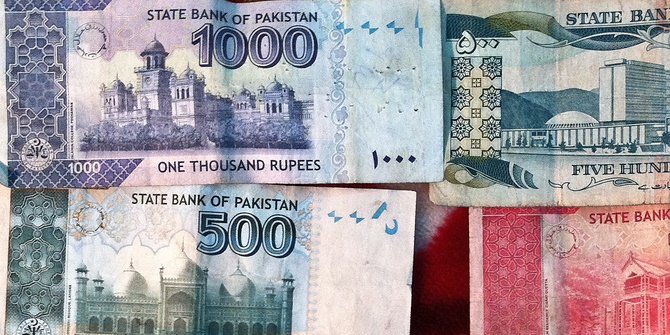 As the first of five phases in the Bihar Assembly election gets underway Pranav Gupta takes a look at the political alliances that have formed to contest what is shaping up to be a very tight race. He argues that although voting patterns in the 2014 Lok Sabha elections would suggest an easy win for Nitish Kumar and Lalu Prasad Yadav’s partnership, there are multiple factors which mean the contest remains open in Bihar.
As the first of five phases in the Bihar Assembly election gets underway Pranav Gupta takes a look at the political alliances that have formed to contest what is shaping up to be a very tight race. He argues that although voting patterns in the 2014 Lok Sabha elections would suggest an easy win for Nitish Kumar and Lalu Prasad Yadav’s partnership, there are multiple factors which mean the contest remains open in Bihar.
The 2015 Bihar Assembly election is likely to be the most keenly contested election in the east Indian state in recent decades as friends-turned-foes-turned-friends Nitish Kumar and Lalu Prasad Yadav have joined hands to take on the Bhartiya Janata Party (BJP) led National Democratic Alliance (NDA). Although their ‘Grand Alliance’ brings togther the principle regional forces of the state – the Janata Dal (United) (JDU) and the Rashtriya Janata Dal (RJD), this election is currently a tight race, with no common trend emerging from the opinion surveys.
The Bihar election is critical for both the alliances. A victory for the BJP is likely to rebuild the momentum that the party enjoyed in the wake of May 2014 and would greatly contribute to its plans of a national expansion. It would also helpful in dispelling questions over the party’s governance model at the centre and the public perception of its policies. On the other hand, Lalu Prasad Yadav has already been in opposition in Bihar for close to a decade now, so another loss in this election could move the RJD towards terminal decline. For the JDU, it could mean a collapse of the limited social base it presently has in the state.
If one looks at the result of the 2014 Lok Sabha Election in Bihar in terms of vote share and assembly segment leads, it is clear that the Grand Alliance began the race comfortably ahead. The JDU, RJD and the Congress had a combined vote share of 45.5 percent, compared to the NDA’s 38.8 percent. More importantly, on 146 seats the combined vote share of the Grand Alliance was greater than the NDA.
Table 1: Lok Sabha Election 2014 in Bihar

Despite this significant difference between support for the two alliances in the Lok Sabha Election (which was ironically a peak for the BJP and the lowest point for the RJD and JDU), this election should not be seen a one-sided contest. Much has changed in Bihar since May 2014 and there are multiple factors which mean the contest remains wide open.
First, for many years the forces of Mandal-Kamandal have determined the politics of Bihar. In this election also, caste and communal polarisation seem to be playing an important role. In fact, Lalu Prasad Yadav openly claimed that the election is going to be a contest between forward castes and backward castes. The broad social blocs that the two alliances seem to building are quite clear. The BJP is looking to consolidate support among the Upper Castes, who are traditional BJP loyalists, and the Dalits. As Shreyas Sardesai analysed in a recent Indian Express article, even id the BJP itself does not attract Dalit support, the NDA could still lead among this group because the alliance includes Ram Vilas Paswan’s Lok Janshakti Party and Jitan Ram Manjhi’s Hindustani Awam Morcha. In addition to this, the BJP will try to make inroads among Nitish Kumar’s traditional Kumri-Koeri support base with the help of central Minister and Kurmi leader Upendra Kushwaha’s Rashtriya Lok Samata Party.
The prospects of the Grand Alliance depend heavily on the core support base of Lalu and RJD – Muslims and Yadavs. They will be hoping that other Muslim parties are unable to divide this bloc of votes across the state. The Grand Alliance will also try to consolidate support among Nitish Kumar’s Kurmi community and counter the NDA’s influence among Dalits. The verdict of this election probably rests on the voting pattern of the lower Other Backward Castes (OBCs) and Extremely Backward Castes (EBCs). They are the biggest and most heterogeneous social group in the state and constitute nearly a quarter (24 percent) of the electorate. As Sanjay Kumar and Vibha Attri showed in a recent article, in the Lok Sabha Election, a high proportion of this group supported the NDA. If the NDA manages to repeat its Lok Sabha performance among the EBCs it could surely be heading towards a clear victory.
Second, social justice is no longer the sole determinant of contemporary Bihar politics as vikaas (development) is increasingly becoming an important factor. In a recent, pre poll survey conducted by Lokniti CSDS, almost one in three voters said that development was the most important issue for them in the upcoming election. Thus, the performance of the government both at the state and the centre since 2014 is going to matter. In Bihar, both the central government and the state government seem quite popular. As per the CSDS pre-poll survey, Nitish Kumar’s state government had a net satisfaction of 53 percentage points as compared to central government’s 50 percentage points. This presents a rare scenario where we don’t know which performance people will consider relatively more important. While Nitish himself continues to remain the most popular state leader of Bihar, one wonders what development-centric voters think about his alliance with Lalu. Close to half of the respondents in the above mentioned survey continue to associate Lalu’s rule with Jungle Raj.
Third, for close to two decades Lalu and Nitish were arch political enemies and built separate party organisations and social blocs. In an article for the Indian Express, Rahul Verma and I had mentioned about how it would be difficult for both parties to bring together their supporters and workers. The Grand Alliance would need to eliminate the mutual distrust that exists among their supporters about each other’s leaders. Apart from this, Kurmis and Yadavs – core supporters of Nitish and Lalu respectively – have had years of local level rivalry. It is uncertain how the two parties will be able to overcome this. Nitish Kumar has carefully calculated the tradeoff: although he knows a section of his supporters are likely to drift away because of the alliance, Lalu brings his own strong traditional support base. Will the election then depend on what proportion of the JDU and Congress loyalists don’t vote for the Grand Alliance because of Lalu’s presence? And the big question is who would a Nitish (or Lalu Prasad Yadav) supporter vote for if the Grand Alliance candidate from his/her seat is not from JDU (or RJD)?
Fourth, both alliances have been trying to break the traditional social coalitions of their opponents by making inroads among their core groups. In order to do this, parties seem to be raising identities other than caste/religion. The increased turnout among women in Bihar in recent elections makes them an important section of the electorate and Nitish has been making attempts to ensure that they exercise their voting rights independently in favour of his party. The BJP has been trying to create similar electoral constituency among a different section of voters – the youth. Narendra Modi talks about their concerns in almost every rally and the party seems to be trying to draw young people away from the Grand Alliance’s Yadav-Kurmi core support base.
The vote-seat ratio in Bihar is going to be very interesting, particularly given the uncertainties about the nature of concentration of support for each of the alliances. Each seat will matter if the contest stays as close as it is at the moment. Can the NDA win in the 59 critical seats of the Magadh and Tirhut region? What will happen in the 45 seats the JDU contested in 2010, which have now gone to the RJD? What will happen in the 19 seats that the JDU is contesting in 2015 but left for the BJP in 2010? As the election will progress in five phases spread over a month, it is still quite likely that one alliance will build a momentum and take a decisive lead.
About the Author
 Pranav Gupta is currently pursuing MSc. in Political Science and Political Economy at the London School of Economics and Political Science. Previously he worked as a Reseach Assistant on the Lokniti Programme at the Centre for the Study of Developing Societies in New Delhi.
Pranav Gupta is currently pursuing MSc. in Political Science and Political Economy at the London School of Economics and Political Science. Previously he worked as a Reseach Assistant on the Lokniti Programme at the Centre for the Study of Developing Societies in New Delhi.







